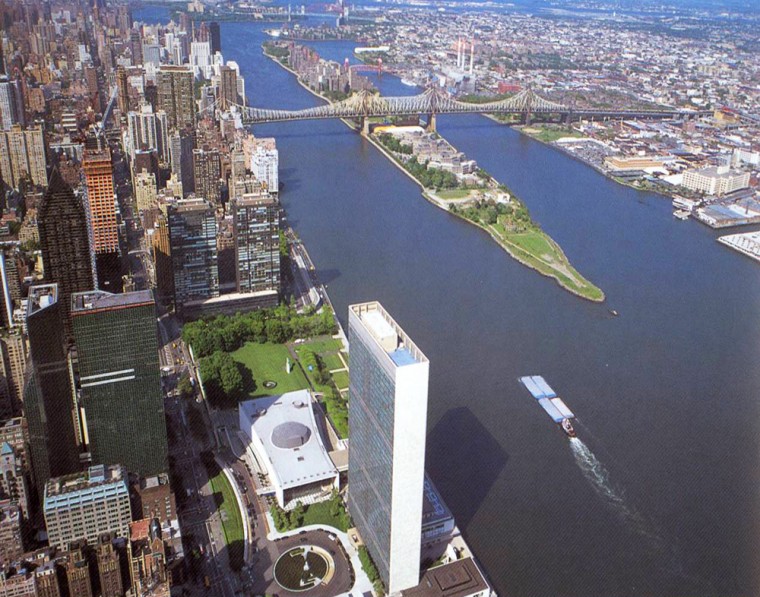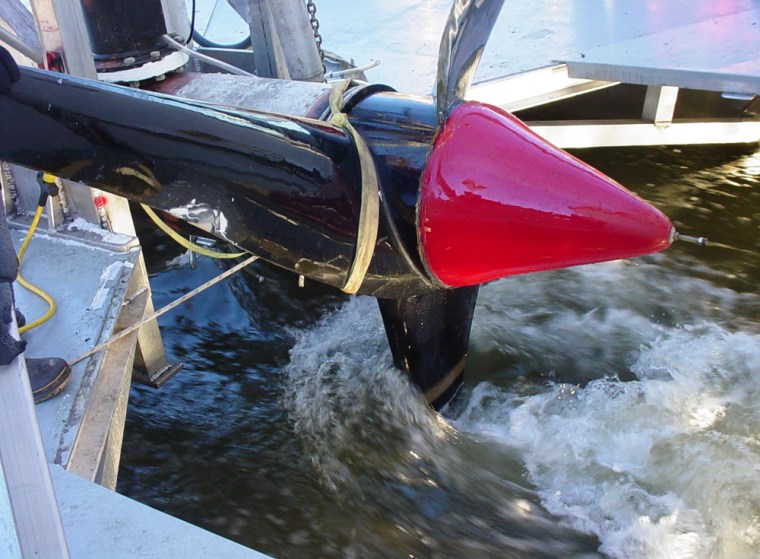Since ancient times poets have revered the power of the seas. Now energy companies and coastal cities like New York and San Francisco are aiming to tap ocean waves and tidal currents as abundant sources of electricity.
Whether captured by big buoys bobbing on sea swells, or by submerged turbines spinning with the ebb and flow of the tides, the energy potential of moving water, or marine power, is beginning to turn heads in the energy world.
“I’m pretty bullish on the technology,” said Robert Thresher, a wind power researcher at the U.S. Department of Energy’s National Renewable Energy Laboratory.
Thresher said water power has several advantages over wind power, including having a lower profile. One day marine power could catch on like wind power, currently the fastest growing alternative energy, he said.

“It doesn’t have the visibility of a wind turbine device,” he said. Some critics, like Sen. Ted Kennedy, D-Mass., have fought offshore wind farms because they say a forest of tall turbines spoils views of the horizon.
Another advantage, Thresher said, is that water currents are more energy-dense than wind currents — about 1,000 times more.
“My wind power brethren say their turbines generate more power when it’s humid,” said Trey Taylor, president of Verdant Power, which makes underwater turbines. “I like to say, 'You can’t get any more humid than water.’”
Scotland ahead of pack
Marine power is in its infancy. But an experimental wave project run last summer by Ocean Power Delivery Ltd in the Scottish Orkneys successfully provided power to 500 homes through Scottish Power.
Marine power research has received millions of dollars worth of government subsidies in Scotland, but the United States currently has no federal program.
Still, the potential is high for U.S. waters, even at many of the nation’s thousands of dams and rivers. “Just below the Niagara Falls is a fantastic source of energy,” Taylor said.
The technology is so young that fish protectors Trout Unlimited have not formed an opinion on wave power. But marine conservation group Surfrider Foundation is “guardedly optimistic” about a system of buoys planned by New Jersey-based Ocean Power Technologies, said spokesman Matt McClain.
New York City test
This May, Verdant Power is scheduled to place six turbines on the bottom of New York City’s East River to supply power to a food market on Roosevelt Island in the river, which separates Manhattan from the boroughs of Brooklyn and Queens.
Environmental regulators are examining the plans and weighing possible problems for fish and other marine life.
Verdant says turbines are unlikely to harm animals because their blades are dull, widely spaced, and turn slowly. The company is seeking the go-ahead to install as many as 200 to 300 turbines in the East River.
"Unlike conventional hydropower turbines, free-flow turbines turn very slowly," Taylor told MSNBC.com. "They rotate at about 30-32 rpm. For the fish, it would be the same as us walking through a revolving door."
Any fish getting close to the rotor would be gently pushed away by "a small pressure wave coming from the edge of the blunt rotor," he added.
"The turbines are also separated by 50 feet side to side and over 120 feet fore and aft of each other, and they are off-set," Taylor said. "Furthermore, the small field of six takes up less than 4 percent of the cross-section of the East Channel of the East River.
"In other words, there is a lot of room for the fish to swim around the turbines; and if they swim through them, the slow revolutions can be avoided."
The turbines will be monitored for up to 18 months, he added, to track the fish and check the blades things like river debris.
If expanded, the project could produce five to 10 megawatts of electricity at an initial cost of $20 million, Taylor said, while New York state as a whole could produce about 1,000 megawatts, or power for about 1 million homes. The fuel source is free.
Nine times more than dams
Roger Bedard of think tank Electric Power Research Institute said the amount of wave energy available off the coasts of the United States is nine to 10 times the energy currently generated by the country’s hydroelectric dams.
The city of San Francisco is studying harnessing the power of offshore waves as well as ocean tides that surge beneath the Golden Gate Bridge. It’s looking at clean power as an option to replace two old power stations fired by natural gas.
“The city has an advantage because we sit at the tip of a peninsula with water on three sides,” said Jared Blumenfeld, director of San Francisco’s Environment Department. “We can do what makes sense for our geography.”
The city is working on a demonstration project with Scotland’s Ocean Power. The company’s Orkney project uses a floating steel cylindrical device, about the length of four train cars, with sections connected by hinged joints.
Rolling waves move against the sections to pump high-pressure oil through hydraulic motors that generate electricity which is sent through a cable to the grid.
San Francisco also wants to test a wave energy converter to power pumps at a large water treatment plant.
Other areas eyed
Other candidates for offshore pilot projects are Oahu, Hawaii; WellFleet, Mass., and Gardiner, Ore.
Wave power advocates also eye the Gulf Stream off the East Coast as a potential powerhouse generator, where one day the electricity could be used to make hydrogen supplies for fuel cells.
Other companies working on wave energy converters are TeamWorks of the Netherlands, Energetechs of Australia, and WaveDragon of Denmark.
